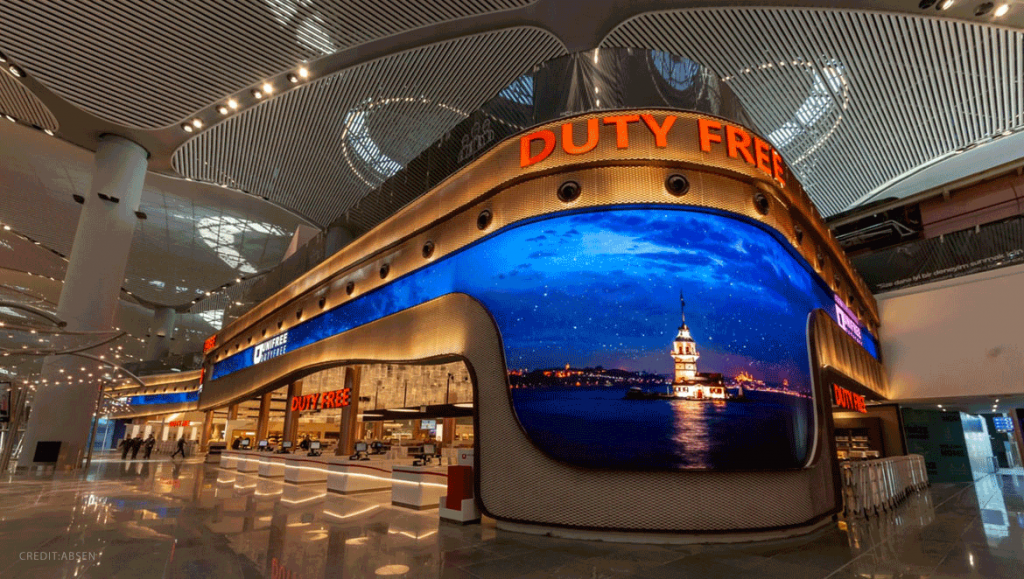Public spaces, corporate environments, themed entertainment among many others seek to draw attention to their video displays. In a world increasingly crowded with video from phones to billboards, the first challenge in designing your video installation is to ensure it draws attention. One key method to ensure your audience notices your video wall is to use a more creative display size and shape.
Thanks to LED tiles, bezel-less displays and projection mapping, the only limit on the design of your next video display is imagination. Designing, creating and mapping video content onto ‘non-standard’ display sizes and shapes has long been a barrier for many designers, and it does not have to be. Media Servers offer a host of tools from pre-visualization to video mapping that hugely simplify the content creation and delivery process and ensure creativity.
In this blog we will discuss the design and creation pipeline for creative, non 16:9 display setups and highlight common challenges and solutions.
Design with the source in mind
Whether using LED tiles or projection, the first key content consideration is: how will video be made and delivered to be shown on the display?
Most commonly, video content will come from one of three sources: custom-made for the display, generic assets like logos, or live capture from an outside provider such as the evening news. It is critical to take into consideration what source(s) are planned for the display as it is designed. Custom-made content offers the most flexibility as it can be designed specifically for the display while generic assets or live capture tend to be 16:9 and standard HD or 4K resolutions.
The requirement to show fixed resolution or aspect ratio video does not however need to hinder the creative potential of a display. Output mapping techniques commonly found in Media Servers such as Video Mapping and Projective Texturing mean that videos can be ‘re-mapped’ onto the display as needed. This can be done on a per-source basis ensuring that even different sized assets can be used.
A key consideration when planning to map existing assets onto the display is to ensure the physical design suits the subject matter. For example, a common oversight is to underestimate the size of LED walls and the effect that has on fast-moving content; a video that looks great on a large format television may be too fast moving for a larger display. Pre-Visualizing the design and testing with actual content in the virtual world is a great way to see what it will look like before ever building anything. Many Media Servers offer a built in 3D Visualizer. A visualizer is also a great way to create visuals and better pitch the customer.
Playback to display
Even the most complex and creative video display designs are commonly driven from 2D content of a given resolution. A Media Server will map pixel-for-pixel the content to the display as needed. If all the content is the same resolution, then this can be relatively straight-forward. When different sources and resolutions are mixed and composited, several different mappings may be required. As before, a visualizer is a powerful tool in designing and testing the content mapping thus ensuring everything works long before going to site.
A final consideration is how the video signal will travel from the playback device to the screen. Most cable and display management infrastructure is limited to standard resolutions: often HD or UHD. As display designs, especially LED walls, venture further from standard resolutions, it becomes necessary to add an additional layer of video mapping. This set of mapping seeks to best utilize the infrastructure and reduce hardware costs. The easiest way to think of this is of ‘folding’ content up for transmission to the display. The LED processor ‘unfolds’ the content so bandwidth is not wasted. This method also can ensure that cabling and interconnect is running at standard resolutions reducing on-site configuration and failure modes.
Download the full version of this blog in order to learn more:
